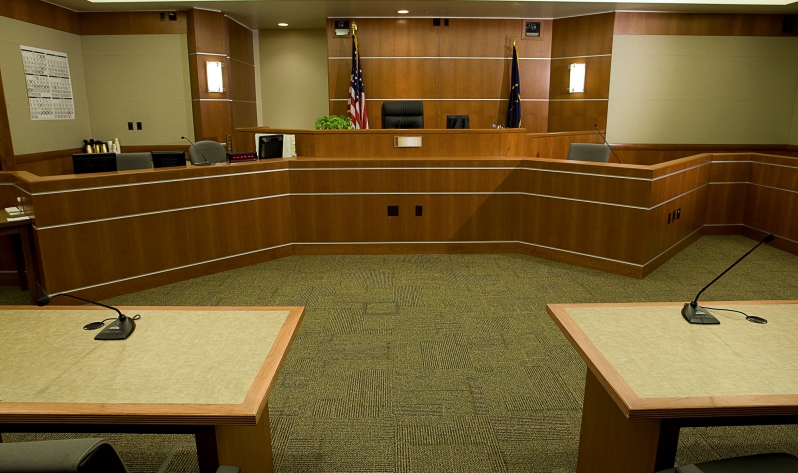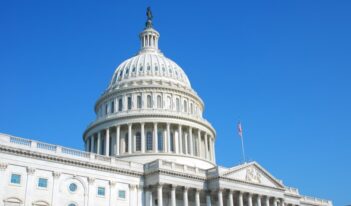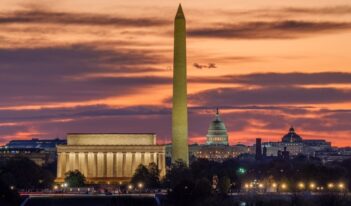
Scholars argue that federal administrative law judges need more insulation from political pressures.
Apart from robed judges in federal courtrooms, a legion of judges reside in federal agencies—administrative law judges (ALJs)—doing the day-to-day work of government. They oversee thousands of hearings each year. In fact, ALJs outnumber Article III judges—the judges that compose the federal judiciary—two-to-one.
Yet following a 2018 U.S. Supreme Court decision, scholars have raised the alarm that the impartiality of ALJs is in jeopardy. In a recent paper, professors Richard E. Levy of the University of Kansas School of Law and Robert L. Glicksman of the George Washington Law School argue that the Court’s decision in Lucia v. Securities and Exchange Commission has enabled changes to hiring and firing of ALJs that undermine their independence and impartiality.
Levy and Glicksman propose preserving ALJ impartiality by putting ALJs in a centralized organization, independent from agencies. If ALJs reside in a dedicated office for administrative hearings, they could be better insulated from improper political pressures and threats to their independence.
One threat to the independence of ALJs has arisen from changes to how agencies hire ALJs. In Lucia, the Court held that the ALJs used by the U.S. Securities and Exchange Commission (SEC) were “Officers of the United States,” a designation that places constitutional limits on who can appoint them. That meant, for the Court, that only the head of an agency can appoint ALJs, a requirement that follows the limits on appointments imposed by the U.S. Constitution. But for years, the SEC (and other agencies) appointed ALJs as if they were just employees hired through the standard civil service process.
Following Lucia, the Trump Administration moved to exempt ALJs from the merit-based civil service hiring process. That put the power of ALJ hiring squarely into the hands of agency leaders—many of whom are political appointees. This shift introduced the threat of political hiring which could erode competence and impartiality in agency adjudications.
Levy and Glicksman argue that another threat to ALJ independence goes beyond the hiring process to that of firing ALJs. Historically, ALJs—like other civil service employees—have been protected from arbitrary removal by good-cause removal restrictions. Good-cause restrictions prevent the removal of ALJs absent incompetence or neglect of duty. But according to official guidance provided by the U.S. Solicitor General after Lucia, good cause for removal could include failure to follow agency “instructions,” which would narrow good-cause protections.
In addition, Levy and Glicksman suggest that the reasoning in a more recent Supreme Court decision—Seila Law LLC v. Consumer Financial Protection Bureau—reflects the Court’s general skepticism toward good-cause protections, opening the door to future challenges to ALJ firing restrictions.
Levy and Glicksman contend that the best solution to these threats to ALJ independence is for Congress to enact legislation that creates a central panel according to which all the ALJs reside together in a centralized agency. A chief administrative law judge would exercise hiring and firing power for ALJs.
Levy and Glicksman acknowledge that this central panel model has its own risks.
One risk is that ALJs would lose the expertise that results from specializing in cases for a particular agency. Levy and Glicksman respond to this concern by proposing that ALJs on the central panel would keep their focus on cases from one agency. This arrangement would preserve the expertise that ALJs gain through familiarity with an agency’s caseload.
Another risk is that the central panel would deprive agencies of legitimate control over the policies that drive ALJ decisions, due to ALJ insulation from accountability mechanisms over hiring and firing that drive compliance with agency wishes. In response to this concern, Levy and Glicksman note that agencies may retain appropriate oversight over policy by issuing rules—through standard notice and comment processes—that enshrine policy choices and bind ALJs. In addition, agencies would maintain the ability to decide cases in the first instance or to review ALJ decisions when essential policies are at stake.
Levy and Glicksman argue that the central panel approach is the best solution. Another option could be for Congress to pass a statute reinstating merit-based hiring and strengthening good-cause removal, but Levy and Glicksman worry that this approach could fail in court on the argument that the statute would unconstitutionally limit the President’s control.
Another approach could be to create an administrative court under the supervision of the federal judiciary. But Levy and Glicksman argue that this structure would prevent agencies from exercising legitimate oversight over cases.
By contrast, their proposal for a centralized panel of ALJs follows recommendations that others have considered. Former U.S. Senator Howell Heflin (D-Ala.) introduced the concept of a “unified Administrative Law Judge Corps” in 1983, but his bill did not pass. And in 1992, the Administrative Conference of the United States considered a centralized ALJ corps but declined to recommend the approach.
Despite past rejections of the central panel model, Levy and Glicksman contend that conditions have changed, making its adoption a necessity.
The central panel model is well established in many states, they point out. When the Uniform Law Commission adopted the Revised Model State Administrative Procedure Act in 2010, it included the central panel, endorsing it as a best practice to achieve “greater fairness in contested case hearings.” This inclusion reflected the approach of 25 states that had already passed statutes creating central panels for administrative hearings.
According to Levy and Glicksman, it is time to take this reform to the federal level.



